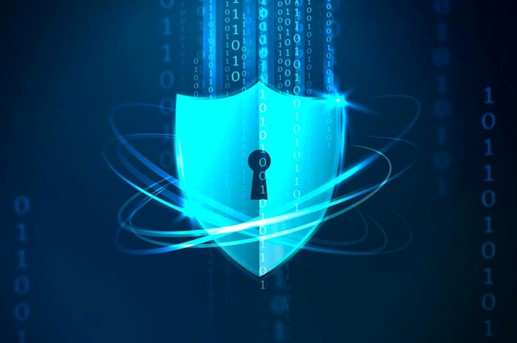
RED Certification in the Age of 5G: Adapting to New Risks
6
min reading time
Building Security In: How 5G Turns RED into a Design Constraint
Your field trial on a private 5G campus network looks flawless until a late review uncovers a narrow path: a slice policy change pushes a config your device accepts without the right checks. The Notified Body asks for evidence that your controls meet Articles 3.3(d), (e), and (f) in 5G conditions, signaling integrity, personal-data safeguards, and fraud protection. Suddenly, your launch plan collides with missing documentation and incomplete, 5G-specific testing.
This isn’t about “bad security.” It’s about proof. Network slicing, virtualized cores, and edge orchestration shift how devices behave, and the evidence must speak that language: identity lifecycle, update rollback prevention, per-slice exposure, and abuse-resilient provisioning. Without it, you trade predictable timelines for rework and delay.
The stakes extend beyond the EU. Operators, private-5G owners, and industrial buyers now treat demonstrable cybersecurity as a procurement filter. Teams that anchor design and documentation to a manufacturer’s playbook for RED 2014/53/EU compliance strategies move faster, avoid last-minute surprises, and signal reliability to partners.
Let’s unpack how a 5G-first approach to RED turns that complexity into clear, auditable evidence.

Why 5G Changes the Landscape for RED Certification
5G expands spectrum use, multiplies connectivity models, and increases the attack surface for every connected device. While the Radio Equipment Directive (RED) has always safeguarded communication integrity, its cybersecurity clauses, namely Articles 3.3(d), 3.3(e), and 3.3(f), take on new urgency in 5G. Building RED compliance into 5G product design ensures controls evolve with network capabilities, reducing certification delays and future-proofing portfolios.

EN 18031 and 5G, Turning Complexity into Evidence
EN 18031 provides the testable foundation for RED cybersecurity. In 5G environments, each part maps to concrete risk domains:
- Part 1 – Network protection (EN 18031-1): defends against signaling storms, spoofing, and over-the-air configuration abuse in virtualized 5G cores.
- Part 2 – Personal data protection (EN 18031-2): extends to identity management, subscriber privacy, and device-level encryption across slices.
- Part 3 – Fraud prevention (EN 18031-3): addresses SIM-based exploitation, fake base stations, and unauthorized service provisioning.
For a strategic overview of how obligations cascade into engineering workstreams, Navigating RED Directive 2014/53/EU: Compliance Strategies for Manufacturer Success outlines the path to keep evidence aligned and audit-ready. For development teams, aligning design, firmware, and network logic with EN 18031 early prevents rework, so evidence is generated during build, not bolted on later. Using EN 18031 as a 5G blueprint merges security-by-design with regulatory needs, streamlining the path from risk assessment to a complete technical file.
Early Planning Checklist for 5G-Ready RED (Articles 3.3(d)–(f))
- Define threat models for public/private/industrial 5G, including edge and slice scenarios.
- Select cryptography libraries with lifecycle and update plans; document defaults and fallbacks.
- Specify device identity & onboarding (eSIM/SIM, certificates, secure elements) and revocation flows.
- Architect secure OTA updates (auth, integrity, rollback prevention) aligned with EN 18031 evidence.
- Map data handling (collection, minimization, retention) to personal data protection criteria.
- Validate network-facing controls against signaling abuse, spoofing, and config tampering in virtualized cores.
- Prepare fraud-prevention controls against SIM misuse, rogue base stations, and unauthorized provisioning.
Avoiding Common Pitfalls
- Treating RED cybersecurity as a “post-test” instead of engineering it into the 5G design from day one.
- Leaving update, identity, and crypto policies undocumented, blocking later evidence collection.
- Ignoring slice-specific risks (per-slice identity, QoS signaling) that don’t appear in legacy testing.

How CCLab Supports 5G-Ready RED Certification
CCLab delivers end-to-end RED, and thus 5G cybersecurity services, guiding manufacturers through evolving expectations under Articles 3.3(d)–3.3(f). Services include gap analysis & risk mapping for 5G use cases (IoT modules, base stations, connected industrial equipment), accredited cybersecurity testing & evidence preparation (coordinating with Notified Bodies such as CerTrust, ID 2806), penetration testing & vulnerability assessments aligned to real 5G threat vectors, and practical 5G compliance resources to keep engineering and documentation synced as standards evolve.
What this means for your team
- Faster technical file completion with evidence captured during development.
- Fewer late-cycle surprises because 5G-specific risks are tested in advance.
- Scalable compliance across product families using a shared 5G-security blueprint.

The Real-World Payoff
As 5G reshapes connectivity, meeting RED cybersecurity requirements is critical for trustworthy communication and sustained market access. By integrating EN 18031 controls into product design, teams anticipate threats, streamline documentation, and build resilient solutions ready for global deployment. For EU-specific nuances across everyday device categories, see How the Radio Equipment Directive Impacts the Cybersecurity of Wireless Devices in the EU. Partnering with CCLab enables confident navigation of 5G-era compliance through accredited testing, targeted consulting, and a proactive security approach that keeps certification current as technology and regulations advance.

Additional Strategic Benefits of a 5G-First Compliance Mindset
- Interoperability by default: Evidence aligns to both EU and non-EU expectations, smoothing multi-market entry.
- Portfolio efficiency: A common EN-aligned security baseline supports reuse of controls across SKUs and versions.
- Future-proofing: As 5G deployments evolve, policy-driven updates (identity, crypto, data retention) keep devices compliant without redesign.

Summary & Next Step
5G magnifies both opportunity and risk. Treat RED cybersecurity (Articles 3.3(d), 3.3(e), and 3.3(f)) as a design mandate, not a test at the end. Use EN 18031 as your blueprint to turn 5G complexity into measurable, auditable evidence. And partner with CCLab to accelerate readiness with accredited testing, realistic 5G threat validation, and documentation that scales across your portfolio.
Related downloadables


RED Cybersecurity - Steps of Compliance Infographics
RED Cybersecurity - Steps of Compliance Infographics
Download this comprehensive infographic guide, which deep dive into the key stages of the Radio Equipment Directive (RED). Gain clarity on technical requirements, risk assessment, and strategic decisions to ensure your products meet EU regulations.
Related news
.jpg)
The CRA as the Cornerstone of the EU Cybersecurity Ecosystem
This article provides an in-depth overview of the EU Cyber Resilience Act (CRA), explaining why the regulation was introduced, its key security requirements, conformity assessment routes such as Module A, the role of harmonized standards, and the lifecycle obligations manufacturers must meet.
10
min reading time

Beyond 2025: Why RED is the Blueprint for CRA Success
The August 1, 2025 deadline for the Radio Equipment Directive (RED) Delegated Act has passed. You have likely spent the last year scrambling to test devices, freeze software, and secure approvals. But just as the dust settles, a new challenge looms: the Cyber Resilience Act (CRA) is now getting in force, with full application expected by December 11, 2027. The immediate worry for many manufacturers is simple: Was the investment for RED wasted? Is the work done for the 2025 deadline just a temporary fix destined to be withdrawn when the CRA takes over? The answer is no, if a strategic approach is taken. The two regulations are "in sync," and the work done for RED-DA is the essential foundation for future CRA compliance.
9
min reading time

RED Certification in the Age of 5G: Adapting to New Risks
Your product is days from launch. A last-minute test exposes an OTA configuration path that 5G network slicing can abuse, and now your file is blocked. In the 5G era, small gaps escalate fast. The fix isn’t one more patch; it’s designing RED cybersecurity into the way your device behaves on modern networks, before certification even starts.
6
min reading time
